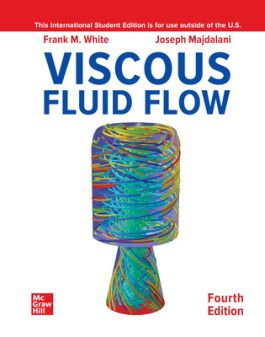Viscous Fluid Flow ISE
2 Fundamental Equations of Compressible Viscous Flow
3 Solutions of The Newtonian Viscous-Flow Equations
4 Laminar Boundary Layers
5 The Stability of Laminar Flows
6 Incompressible Turbulent Mean Flow
7 Compressible-Boundary-Layer Flow
Students are expected to understand the basic foundations of fluid mechanics, vector calculus, partial differential equations, and rudimentary numerical analysis. The material can be selectively presented in a one-semester course or, with more extensive coverage, in two (or even three) semesters.
McGraw-Hill Connect is an award-winning digital teaching and learning solution that empowers students to achieve better outcomes and enables instructors to improve course management efficiency.
High-Quality Course Material
Our trusted solutions are designed to help students actively engage in course content and develop critical higher-level thinking skills while offering you the flexibility to tailor your course to the ways you teach and the ways your students learn.
Assignments & Automatic Grading
Connect features a question bank that you can select from to create homework, practice tests and quizzes. Dramatically reduce the amount of time you spend reviewing homework and grading quizzes, freeing up your valuable time to spend on teaching.
Analytics & Reporting
Monitor progress and improve focus with Connect’s visual and actionable dashboards. Reports are available to empower both instructors and students with real-time performance analytics.
Seamless Integration
Link your Learning Management with Connect for single sign-on and gradebook synchronization, with all-in-one ease for you and your students.


